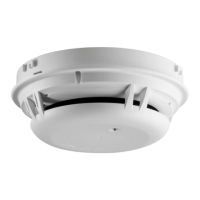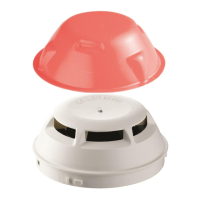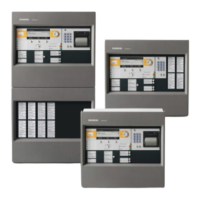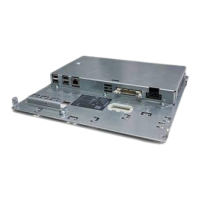4
61 |
Building Technologies
2016-02-15
4.2.5.3 Specification
Name Optical Thermal
Typ. Response
time
from - typ. - to
Sensitivity, open
fire
Sensitivity,
smoldering fire
Static activation
temperature
Differential activation temperature
1
[s] [%/m] [%/m] [°C] ∆T [K]
'Standard Plus' 50 2.3 8 80 25
'Suppression' 90 - 160 - 760 3.2 11.4 80 29
'High Sensitive
Fast'
20 - 30 0.8 2.8 60 16
1
Applicable with fast temperature increases >10 K/min.
°C is above the operating temperature
range permissible for continuous periods.
The point detector may only be used in continuous operation within the specified
temperatures!
4.2.6 Default settings for operating on the C-NET
The default device parameter set is set in the following cases:
● Point detector has not been commissioned
● Device location cannot be localized (e.g., due to a fault)
The device parameter set 0 is set with sensor mode 0 in the point detectors
OOH740 and OOHC740 when delivered.
The following table shows the default device parameter set in the various sensor
modes.
Fire detectors OOH740 / OOHC740 Default device parameter set
Sensor mode 0 (neural fire detector) 'High Compensation'
Sensor mode 1 (heat detector) 'A1R'
Sensor mode 2 (smoke detector) 'Universal'
Upon commissioning of the fire detection system, the optimum parameter set must
be selected based on the existing risk and the ambient conditions.
After the commissioning of the control panel, the fire detectors are automatically
set to their country-specific basic setting.
You can select and set the parameter sets as follows:
● Using the 'Cerberus-Engineering-Tool' software
● Directly on your fire detection system (only within the same sensor mode)
You will find a description of the exact procedure for selecting and setting the
parameters in the relevant documentation.
Please note the chapter 'Applicable documents'.
See also
2 Applicable documents [➙ 9]

